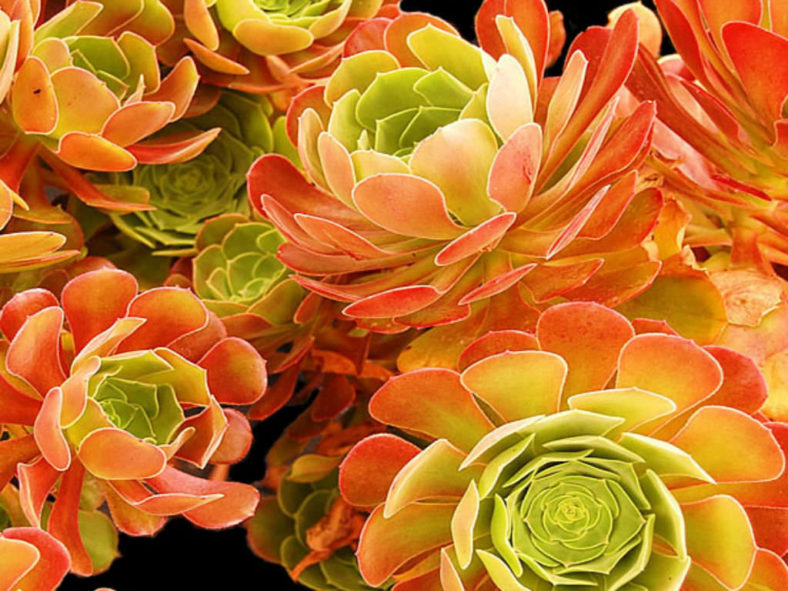Scientific Name
Aeonium 'Blushing Beauty'
Common Name(s)
Blushing Aeonium
Synonym(s)
Aeonium 'Blush'
Scientific Classification
Family: Crassulaceae
Subfamily: Sempervivoideae
Tribe: Aeonieae
Genus: Aeonium
Origin
Aeonium 'Blushing Beauty' is a hybrid created by Jack Catlin. It is a sibling of Aeonium 'Velour' and results from a cross between Aeonium canariense and Aeonium arboreum 'Zwartkopf'.
Description
Aeonium 'Blushing Beauty' is an attractive, shrubby succulent that forms rosettes of colorful leaves at the end of the branches. It can grow up to 3 feet (90 cm) tall. The leaves are pale green with red tinges, and the colors intensify when the plant experiences moderate stress from full sun exposure or drought.
In spring, Aeonium 'Blushing Beauty' produces yellow, star-shaped flowers in clusters on a stalk emerging from the center of the rosettes. After flowering, the rosettes will die, but they will produce offsets at their base, allowing the plant to continue growing.

How to Grow and Care for Aeonium 'Blushing Beauty'
Hardiness: USDA hardiness zones 9b to 11b: from 25°F (-3.9°C) to 50°F (10°C).
Aeoniums do not like hot or dry weather. In summer, they may go dormant and do not require any water except in arid conditions. In extreme heat, their leaves will curl to prevent excessive water loss. Growing them in moist shade will keep them healthy, but their true growth season is from winter to spring, when temperatures are cool, ranging from 65°F to 75°F (18°C to 24°C), and the air is damp. In winter, water the soil whenever it has dried out. Test by poking your finger down into the soil an inch or 2 (2.5 to 5 cm). Too much moisture or allowing them to sit in wet soil will cause root rot.
A sandy loam or regular potting mix is preferable to a mix specifically designed for cacti and succulents, as Aeoniums require some moisture. If you grow them in containers, repot them with fresh potting soil every 2 to 3 years.
Feed the plant with a half-strength balanced fertilizer every month during the growing season. Do not feed it while it is dormant.
Learn more at How to Grow and Care for Aeonium.
Links
- Back to genus Aeonium
- Succupedia: Browse succulents by Scientific Name, Common Name, Genus, Family, USDA Hardiness Zone, Origin, or cacti by Genus
Photo Gallery
Click on a photo to see a larger version.


